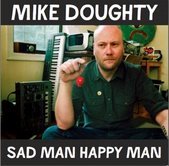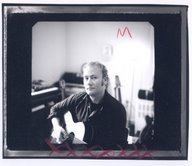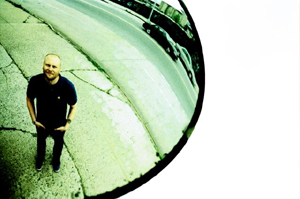Doin’ M. Doughty: 4 Questions for Pat Dillett on Producing/Mixing “Sad Man Happy Man”

Mike Doughty’s lookin atcha
NOHO, MANHATTAN: Sly. Sardonic. Salty. Sarcastic. Those are great adjectives for describing M. Doughty, ex-Soul Coughing front-human who recently released his latest solo album, the acoustic-powered, poetically groovy Sad Man Happy Man on Ato Records.
But we are not talking about M. Doughty as we wield these colorful descriptors. Nay, we refer with the above to Patrick Dillett, his producer/recordist on the record, and mixer for 12 of its 13 tracks. Working out of Kampo in NoHo, Dillett just keeps quietly helping the best in the business – David Byrne, Brian Eno, Mary J. Blige, Laurie Anderson, They Might Be Giants, Bebel Gilberto, Yoko Ono, The National – be their best.
Pat’s a busy man, y’dig? So we asked him just four questions (although admittedly some of these so-called singular questions are actually question “clumps” — you’ll figure it out).
Q: Where are you based out of for engineering/producing? How have you shaped that facility to fit your specific needs and the way you work?
A: I have a studio space in a larger facility called Kampo Cultural Center — the room I use every day is a John Storyk-designed, 5.1 room, outfitted for my work, which is mostly mixing.
I have a G5 8 core and Pro Tools HD3 accel. Since I do a lot of mixing in the box, I have a huge selection of plug-ins – a shameful number of which I do not even use. Additionally, I have a lot of analog gear I use on hardware inserts, including some original 550 APIs and old MXR Microflangers. I also have a sizable booth for vocals and other overdubs, and I use Kampo’s great studio A live room for tracking larger sessions.
I was the producer on Mike Doughty’s Sad Man Happy Man. I also recorded and mixed the record, except for the song “Doubly Gratified,” which David Kahne remixed and co produced. All of the work I id on the record took place in my studio, with some original tracking taking place in Kampo’s Studio A.

Here he is with his guitarrrrrrrrrrr.
Q: You said that had some interesting artistic struggles along the way to recording “Sad Man Happy Man”. What were they, and how did you and Mike resolve them?
A: I’ve known Mike for years, having worked on an EP with Soul Coughing before El Oso, and then on a few songs on El Oso. Most of the things Mike and I have done together have been EPs and one-off projects — Rockity Roll, Busking, a song for the Move On benefit — that are more about offering another side of Doughty rather than full albums.
As a producer, I am not programming beats or writing songs with Mike. The way I’m most comfortable producing is shaping the sonic production to fit the song — sometimes that strays into song structure and programming, but in general it’s more about using sound to fulfill the possibilities of the song. Whether it’s in choosing instrumentation, or effects, or simple EQ, that’s the area I can contribute the most to an artist like Doughty.
This time around, Mike was pretty adamant about wanting to keep this record simple in terms of instrumentation, and originally he wanted it to be only him and Scrap (Andrew Livingston, cellist) playing essentially live. We recorded pretty much everything on the album that way. After that, I expressed to Mike that I thought some of the songs really cried out for a more fleshed-out instrumentation.
Mike preferred not to bring in more musicians, but rather program some beats himself and play some more incidental keyboards as well. This was fine with me, since I’ve always enjoyed Mike’s programming — some of his stuff on Rockity Roll is still my favorite Doughty work. So we didn’t really struggle with a difference of opinion, as much as I think we found a way to make everyone happy.
I appreciate that Mike was eager to respond to the stated desire of a lot of his fans to hear an all-acoustic Doughty record, but my goal was to also give the record the best chance of finding new fans as well. Some of these songs really seemed to want that Doughty beat under them, and I’m glad he did such great work on those beats. Hopefully, it will appeal to more people and keep his acoustic fans happy as well.

M. Doughty is street level. Credit: 60 Cycle Media
Q: What’s your favorite track on Sad Man Happy Man? Let us know something incredibly fascinating about the way you approached recording/mixing it.
A: I think I like “I Keep On Rising Up” best on this record — I think it’s the most successful of the hybrid acoustic/beat tracks. Selfishly, I also like “Pleasure on Credit” because I’m the one shouting the high background “get lifted’ in the chorus. My head still hurts from that. – David Weiss
Part 1 in a series with Pat Dillett. Look for mas on They Might Be Giants, Bebel, and Doveman in da weeks to come.
Please note: When you buy products through links on this page, we may earn an affiliate commission.






